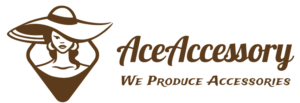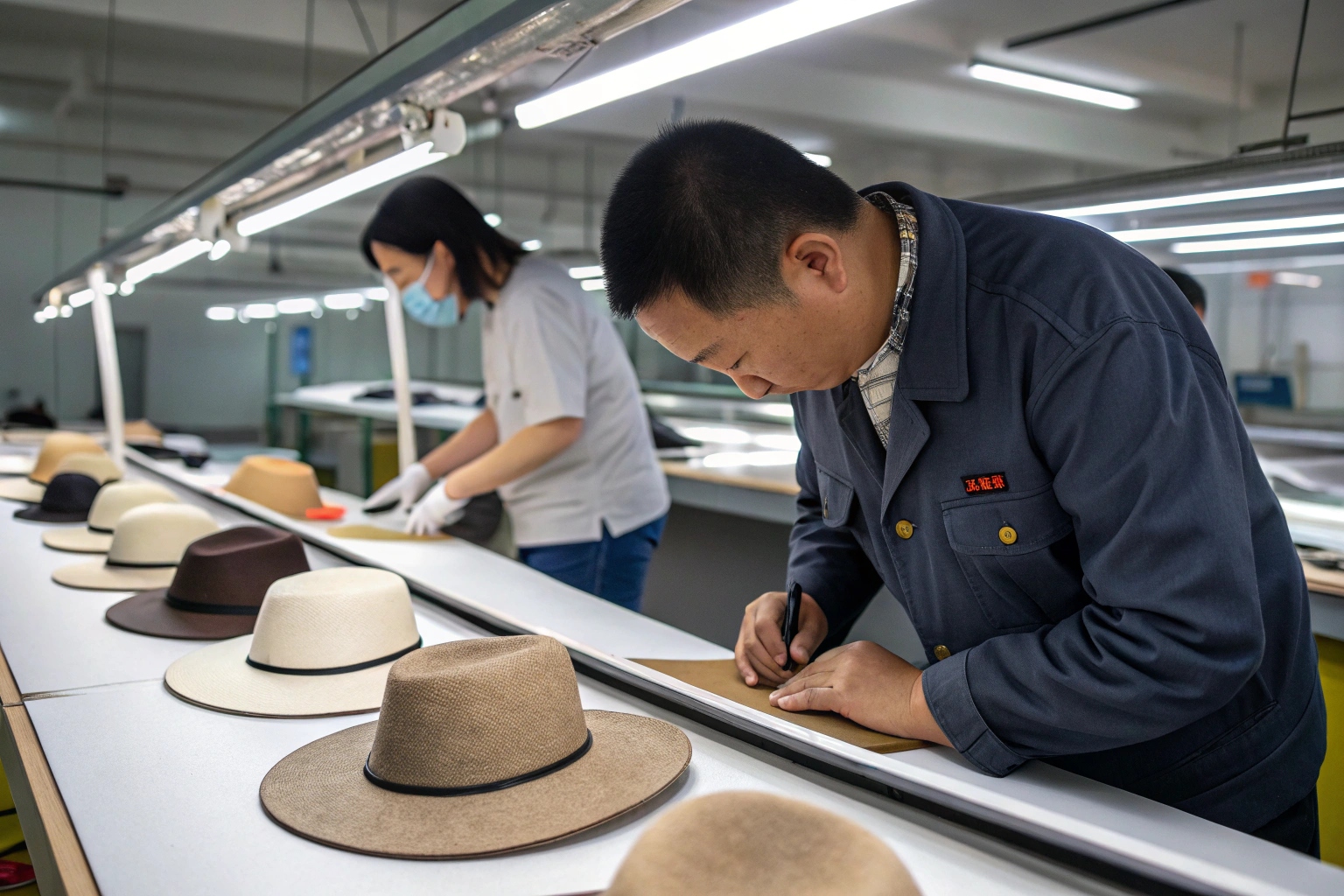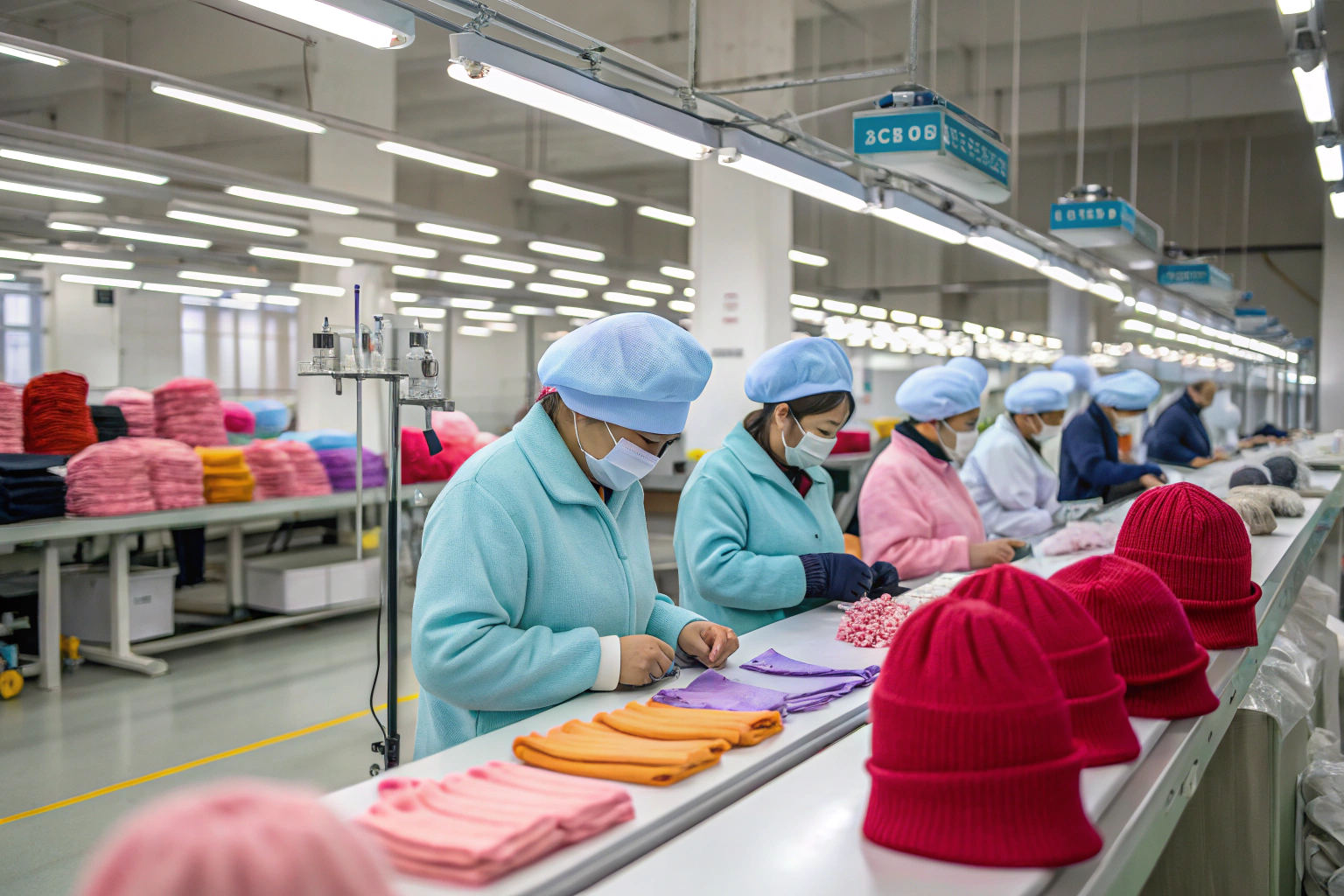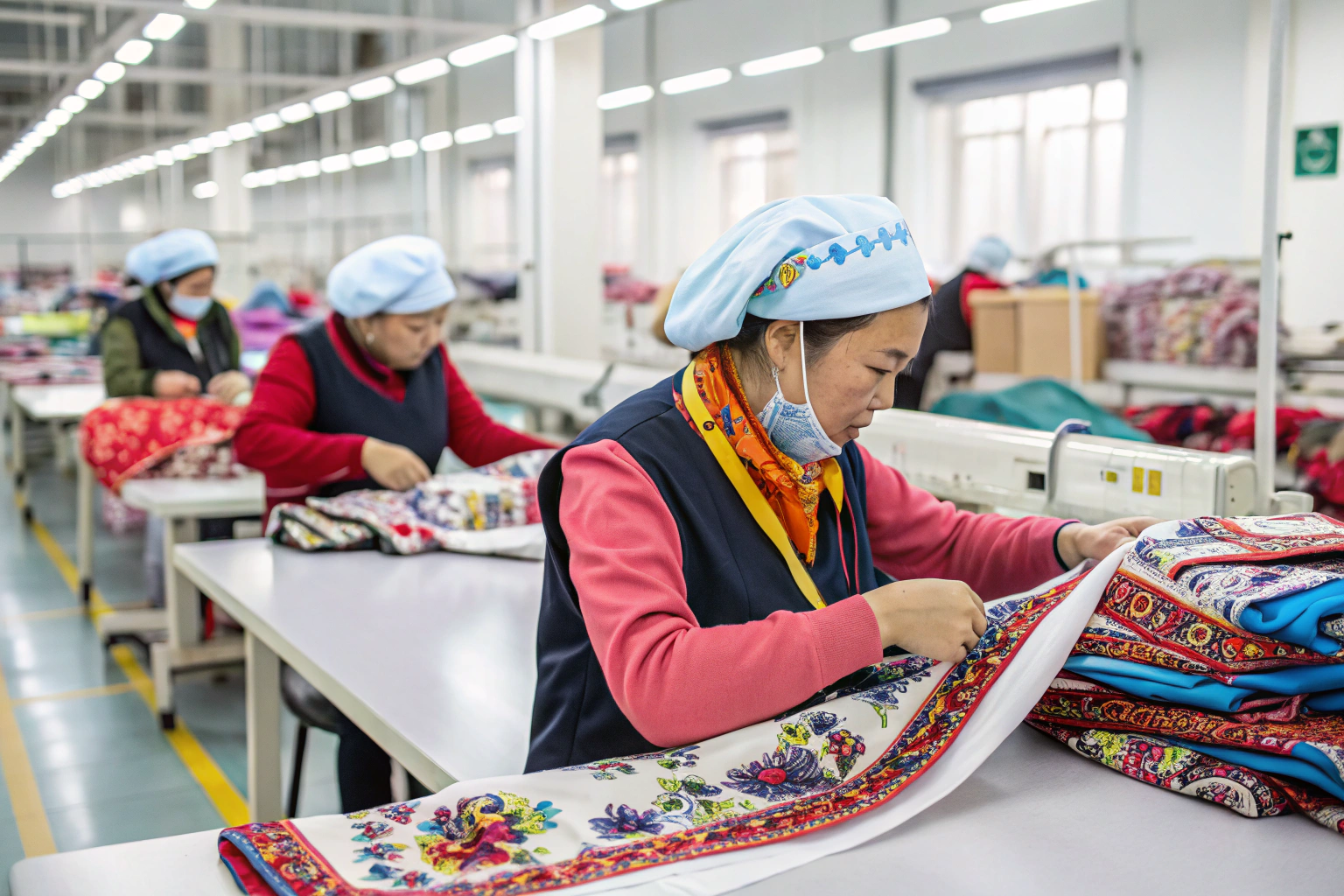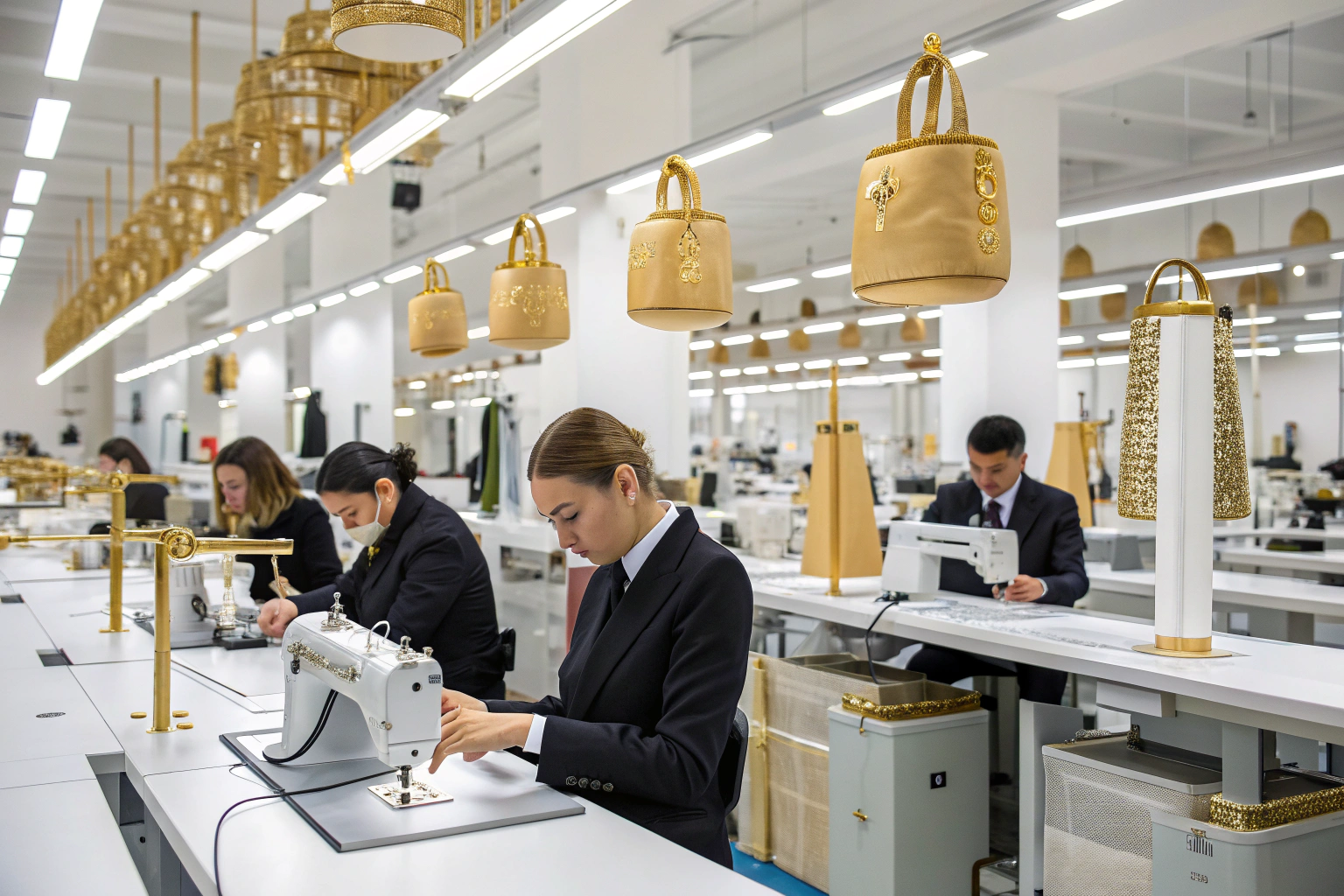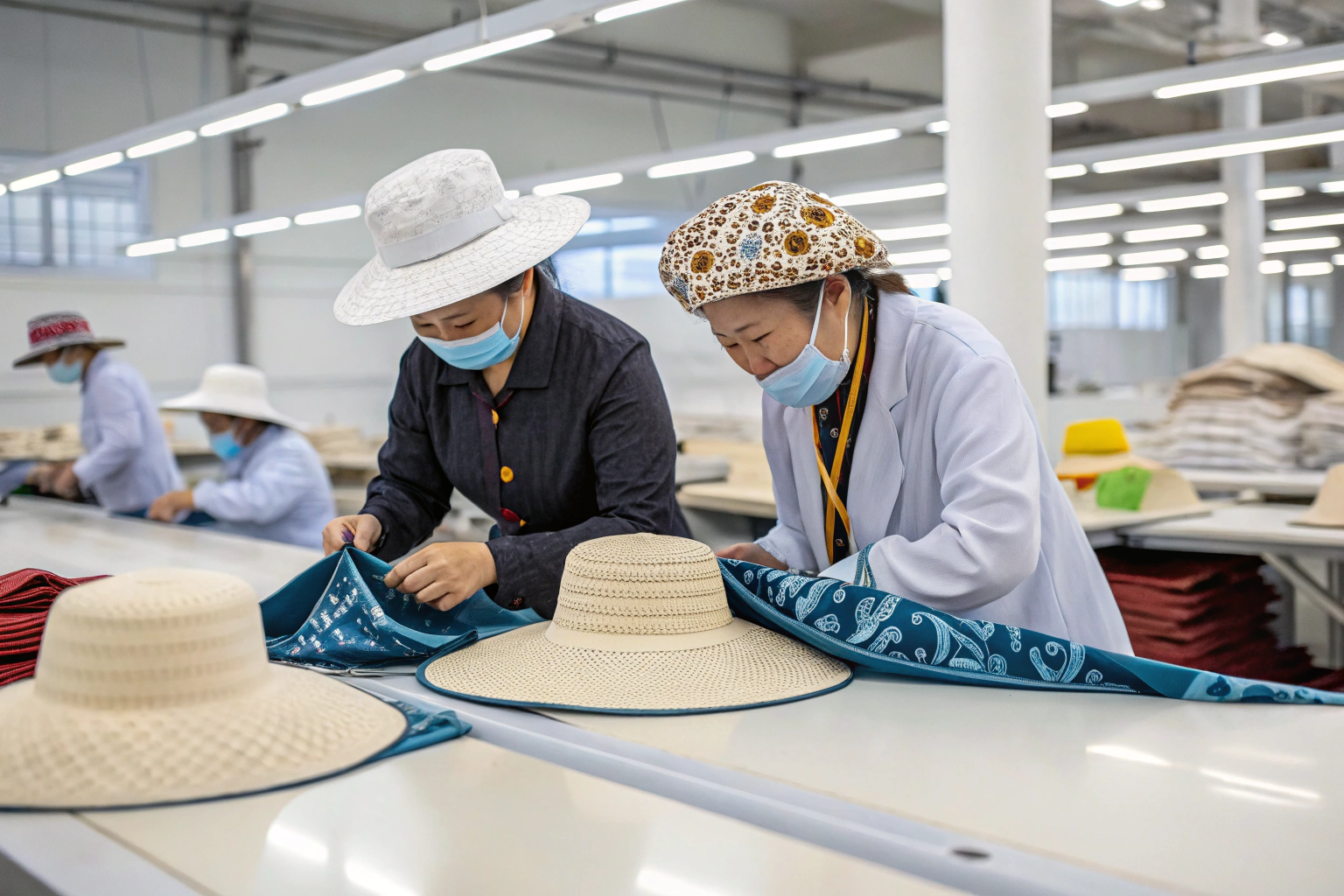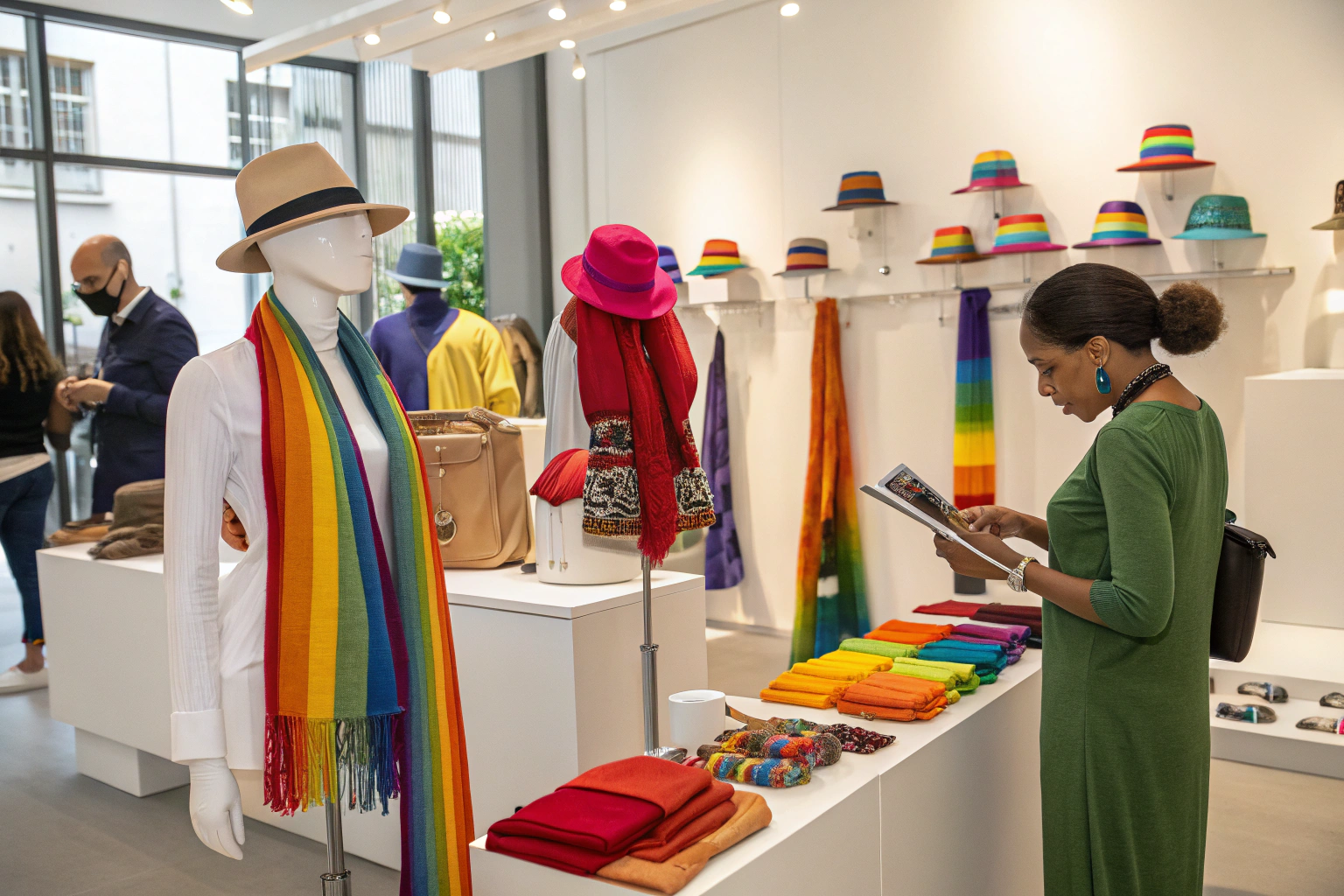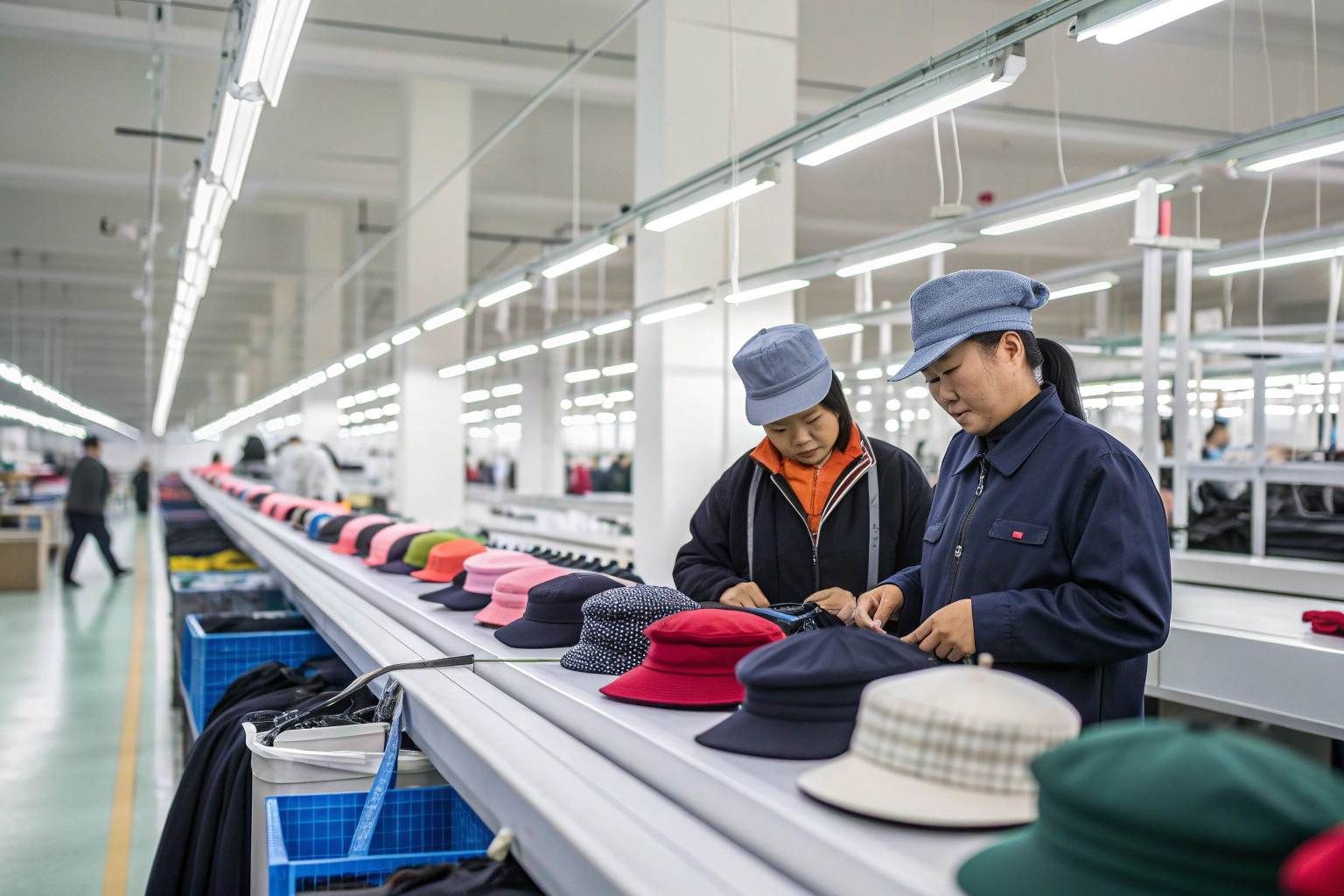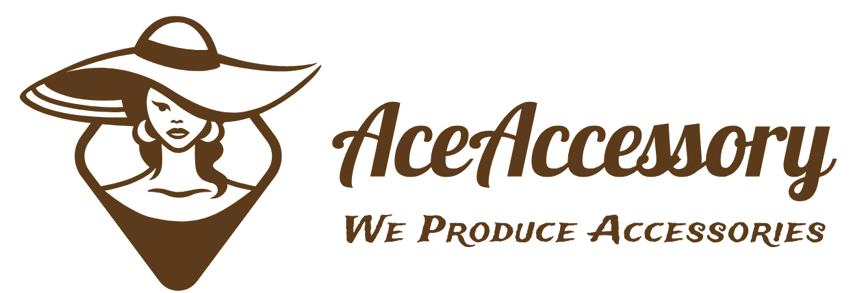Inconsistent hat materials can ruin your entire production run. Whether it’s floppy brims, rough textures, or color mismatches—bad sourcing decisions hit your brand where it hurts.
To handle component sourcing with your factory, you need a structured process that aligns quality, timing, and cost—with clear communication and shared accountability from day one.
At AceAccessory, we manage sourcing from fiber to final stitch. For every hat, scarf, or band we make, the materials are as carefully sourced as the designs themselves.
What are the 7 steps in the sourcing process?
Many importers think sourcing ends with picking a supplier—but real sourcing involves multiple checkpoints. Each one helps you avoid costly mistakes and delays.
The 7 steps of the sourcing process include: need identification, supplier search, qualification, negotiation, contracting, execution, and performance review.
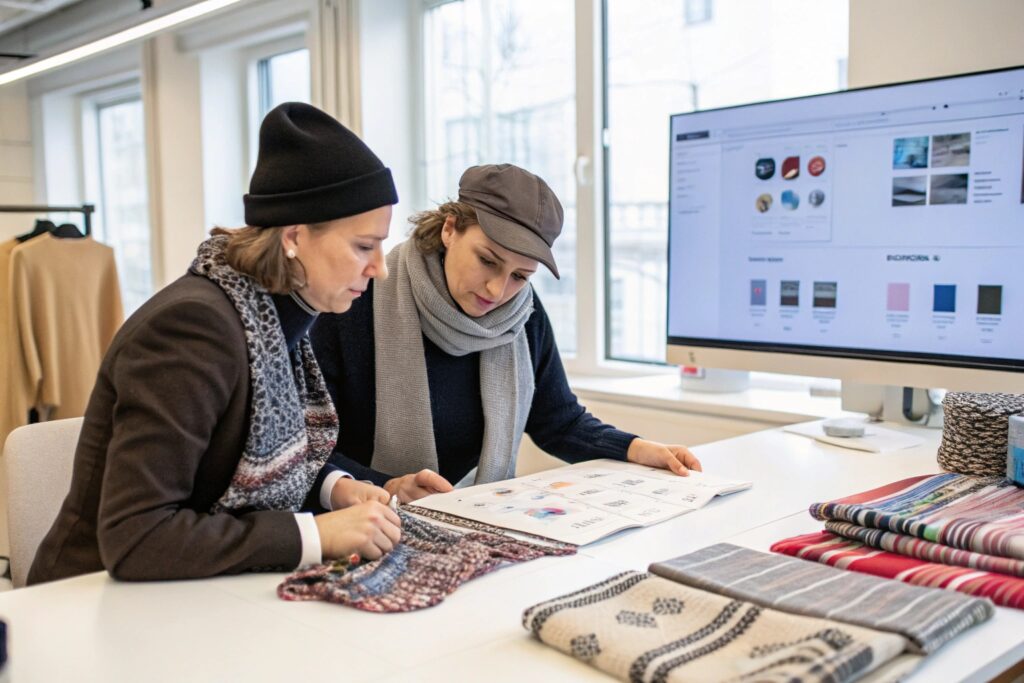
The 7-Step Framework in Detail
-
Identify Needs
Define materials required—e.g., wool felt, cotton twill, PU leather—for your hats, bands, or gloves. -
Supplier Search
Source from approved vendor lists, trade shows, or factory-recommended partners. -
Supplier Qualification
Evaluate quality history, certifications (like OEKO-TEX, GRS), and capacity. -
Negotiate Terms
Agree on price, lead time, MOQs, and reordering mechanisms. -
Contract Creation
Confirm technical specs, quality expectations, and delivery terms in writing. -
Procurement Execution
Place sample orders for pre-testing; scale to bulk once approved. -
Performance Review
After delivery, assess material consistency, delivery time, and returns (if any).
This structure helps us streamline communications with clients, especially when sourcing high-demand materials like straw braids or wool blends for seasonal hats.
What are the 5 steps of sourcing?
Some clients prefer a simplified sourcing model. The 5-step framework is often used when timelines are tighter and volumes are smaller—especially in boutique orders.
The 5 steps include: define, discover, assess, negotiate, and manage—covering sourcing from concept to supplier relationship.

How We Apply the 5-Step Model
-
Define: You tell us your material needs—e.g., waterproof lining for bucket hats or velvet trims for hairbands.
-
Discover: Our team shortlists existing suppliers from our network based in Zhejiang or Jiangsu.
-
Assess: We test samples for stretch, breathability, washfastness, and match to your Pantone code.
-
Negotiate: We lock pricing and lead time with the mill, ensuring your margin is protected.
-
Manage: Ongoing QC and communications until goods reach your warehouse.
This model is ideal for accessory components like hat bands, buckles, metal clips, and eco-certified woven labels.
What is component sourcing?
Component sourcing goes beyond just fabric. In accessory manufacturing, every part—lining, thread, zippers, labels, buttons—needs to be tracked and tested.
Component sourcing means identifying, validating, and procuring every physical input used to assemble a product, from base materials to trims and packaging.
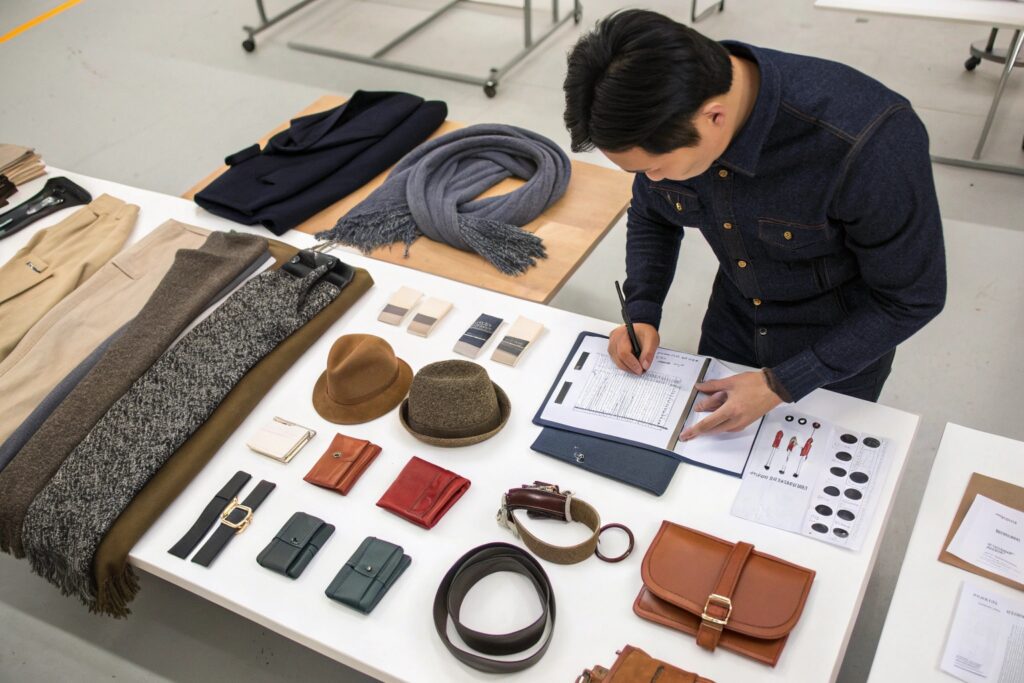
Common Accessory Components We Source
| Component Type | Examples | Sourcing Note |
|---|---|---|
| Fabric | Canvas, velvet, satin | Consider breathability, printability |
| Interfacing | Fusing, padding | Affects shape retention in hats, belts |
| Trims | Buckles, rivets, embroidery | MOQ and plating consistency matter |
| Labels & Tags | Woven, printed, QR-enabled | EU/US compliance needed |
| Packaging | Hangers, boxes, plastic sleeves | Should be stackable + freight-friendly |
We manage all of these in-house with dedicated sourcing coordinators. Clients just approve the pre-samples—we handle the rest.
Conclusion
Smart component sourcing is what separates a smooth production from a delayed one. When your factory manages sourcing with structure and precision, your accessory line stays consistent, cost-effective, and on schedule.
